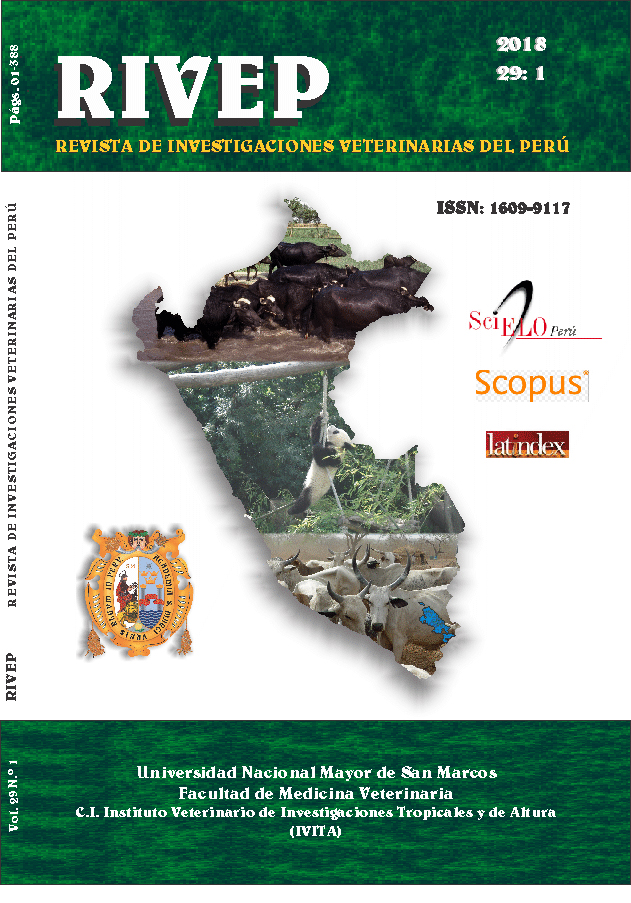End-to-end jejunal anastomosis with bovine pericardium xenograft in equines
DOI:
https://doi.org/10.15381/rivep.v29i1.14190Keywords:
equine, bovine pericardium, anastomosis, xenograft, enterectomy, small intestine, post-surgery colic, post-surgery painAbstract
The feasibility of untreated bovine pericardium xenograft as biomaterial for the lining of the small intestine anastomosis in horses to avoid dehiscences, leakage, fistulas and formation of adhesions in the postoperative period was investigated. Seven horses were submitted to end-to-end jejunal anastomosis coated with untreated bovine pericardial xenograft and a control group of seven horses submitted to end-to-end jejunal anastomosis only. Postoperative pain, cellular components and organoleptic characteristics of the peritoneal fluid were evaluated. It was found that the bovine pericardium xenograft coating does not generate significant differences in the quantification of pain (postoperative colic) nor in the total nucleated cell count of the peritoneal fluid nor does it influence the alterations of the color, turbidity and smell of the peritoneal fluid, demonstrating that untreated bovine pericardial xenograft as a covariant of the jejunal anastomosis does not influence the functions of the alimentary system from the point of view of the postoperative clinical examination. It is concluded that untreated bovine pericardium xenograft is viable and effective because it reinforces the cicatricial remodeling process, avoiding possible anastomotic leakage and peritonitisDownloads
Downloads
Published
Issue
Section
License
Copyright (c) 2018 Ceesar N. Aguilar G., Alfredo Delgado C., Alfonso Chavera C., Medalí Cueva R.

This work is licensed under a Creative Commons Attribution-NonCommercial-ShareAlike 4.0 International License.
AUTHORS RETAIN THEIR RIGHTS:
a. Authors retain their trade mark rights and patent, and also on any process or procedure described in the article.
b. Authors retain their right to share, copy, distribute, perform and publicly communicate their article (eg, to place their article in an institutional repository or publish it in a book), with an acknowledgment of its initial publication in the Revista de Investigaciones Veterinarias del Perú (RIVEP).
c. Authors retain theirs right to make a subsequent publication of their work, to use the article or any part thereof (eg a compilation of his papers, lecture notes, thesis, or a book), always indicating the source of publication (the originator of the work, journal, volume, number and date).










